Personal names in German-speaking Europe consist of one or several given names and a surname. The Vorname is usually gender-specific. A name is usually cited in the "Western order" of "given name, surname". The most common exceptions are alphabetized list of surnames, e.g. "Bach, Johann Sebastian", as well as some official documents and spoken southern German dialects. In most of this, the German conventions parallel the naming conventions in most of Western and Central Europe, including English, Dutch, Italian, and French. There are some vestiges of a patronymic system as they survive in parts of Eastern Europe and Scandinavia, but these do not form part of the official name.

Meier & Frank was a prominent chain of department stores founded in Portland, Oregon, United States, and later bought by The May Department Stores Company. Meier & Frank operated in the Pacific Northwest from 1857 to 2006.
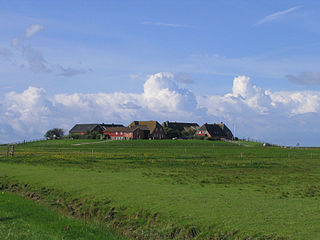
A terp, also known as a wierde, woerd, warf, warft, werf, werve, wurt or værft, is an artificial dwelling mound found on the North European Plain that has been created to provide safe ground during storm surges, high tides and sea or river flooding. The various terms used reflect the regional dialects of the North European region.

Benediktbeuern Abbey is an institute of the Salesians of Don Bosco, originally a monastery of the Benedictine Order, in Benediktbeuern in Bavaria, near the Kochelsee, 64 km south-south-west of Munich. It is the oldest and one of the most beautiful monasteries in Upper Bavaria. It was badly damaged in an extreme weather event in 2023.
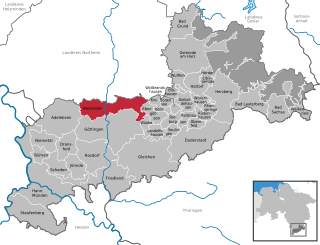
Bovenden is a municipality in the district of Göttingen, in Lower Saxony, Germany. In 2020 the population in the eight villages belonging to the municipality was 13,891.

The SS Main Economic and Administrative Office was a Nazi organization responsible for managing the finances, supply systems and business projects of the Allgemeine-SS. It also ran the concentration camps and was instrumental in the implementation of the Final Solution through such subsidiary offices as the Concentration Camps Inspectorate and SS camp guards.

Gals is a municipality in the Seeland administrative district in the canton of Bern in Switzerland.
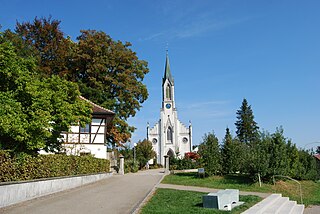
Bünzen is a municipality in the district of Muri in the canton of Aargau in Switzerland.
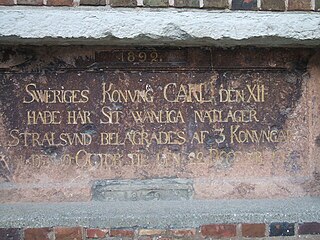
The siege of Stralsund was a battle during the Great Northern War. The Swedish Empire defended her Swedish Pomeranian port of Stralsund against a coalition of Denmark-Norway, the Electorate of Saxony and the Tsardom of Russia, which was joined by the Kingdom of Prussia during the siege.

Schloss Hof is a palace located in Marchfeld, Austria near the border with Slovakia. It once belonged to Prince Eugene of Savoy who purchased it late in his life in 1726. He had it enlarged in the Baroque style by the architect Johann Lukas von Hildebrandt in 1729, and used it as an elaborate hunting lodge. He left it to a niece in his will, and it was later purchased by Empress Maria Theresa of Austria and became part of the imperial estates.

Hunting Lodge Farm is a historic house located near Oxford in Oxford Township, Butler County, Ohio, United States. Constructed as a hunting lodge, it has been used by multiple prominent local residents, and its distinctive architecture has made it worthy of designation as a historic site.

Rom is a municipality in the Ludwigslust-Parchim district, in Mecklenburg-Vorpommern, Germany.

The Haus zum Rüden building is the assembly hall of the Gesellschaft zur Constaffel and one of the historically notable buildings in Zürich, Switzerland. It is situated at the Limmatquai promenade in Zürich, Switzerland, opposite of the Münsterhof plaza respectively the Zunfthaus zur Meisen, and neighboured by the Zimmerleuten, Kämbel and Saffran guild houses.
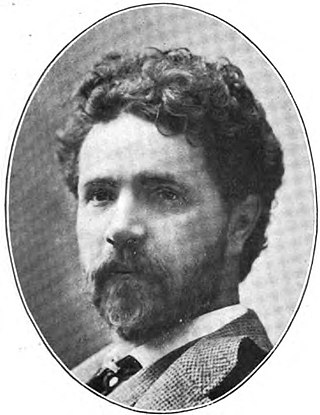
John M. Donaldson was an American architect and artist born on January 17, 1854, in Stirling, Scotland. Donaldson was principal designer of the successful Detroit-based architectural firm Donaldson and Meier from 1880 onwards.

The Rannasee is an artificial freshwater lake in Austria and in Germany. The reservoir is located along the Ranna River and is the largest lake in the Bavarian Forest

The Principality of Brunswick-Wolfenbüttel was a subdivision of the Duchy of Brunswick-Lüneburg, whose history was characterised by numerous divisions and reunifications. It had an area of 3,828 square kilometres in the mid 17th century. Various dynastic lines of the House of Welf ruled Brunswick-Wolfenbüttel until the dissolution of the Holy Roman Empire in 1806. As a result of the Congress of Vienna, its successor state, the Duchy of Brunswick, was created in 1815.

Salzburg College is a small, private Austrian institution specialized in study abroad and located in Salzburg, Austria. Students come to Salzburg College to study:

The Samuel Danford Farm is a historic complex of buildings in northeastern Noble County, Ohio, United States. Located near the village of Summerfield, the complex comprises six buildings and one other site in an area of approximately 7.5 acres (3.0 ha).

The Estonian Knighthood House is a building in Toompea, the upper part of Vanalinn, the historic inner town of Tallinn, the capital of Estonia. Its address is Kiriku plats 1. The Dome Church is situated at the same square.

Silvio Meier (1965–1992) was an East German activist and squatter who was killed by neo-Nazis in Berlin on 21 November 1992. After moving to East Berlin in 1986, Meier became involved in oppositional politics with the Church from Below. His death has been commemorated with an annual memorial march and the renaming of a street in the Berlin district of Friedrichshain.




















